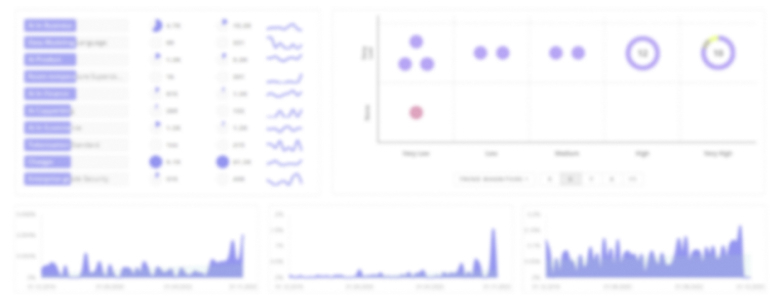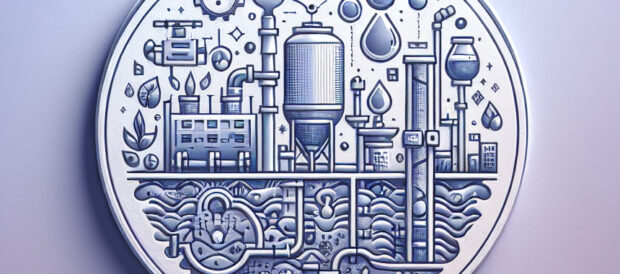
Chemical Treatments Report
: Analysis on the Market, Trends, and TechnologiesThe chemical treatments sector is at a market inflection where regulatory pressure, industrial demand and capital flows align: total funding tracked across companies in this topic is approximately $1.09B, signalling active investor interest in remediation and next-generation treatment platforms. Global market forecasts in surface and water treatment indicate expansion—independent market studies project chemical surface-treatment market values rising from mid-teens billions today to mid-20s billions within the next decade, driven by automotive, electronics and municipal water upgrades. The practical implication: companies that pair low-emission chemistries or non-chemical processes with digital dosing and modular deployment will capture regulatory-driven retrofit budgets and higher-margin new-build specifications.
We updated this report 15 days ago. Noticed something’s off? Let’s make it right together — reach out!
Topic Dominance Index of Chemical Treatments
The Topic Dominance Index trendline combines the share of voice distributions of Chemical Treatments from 3 data sources: published articles, founded companies, and global search
Key Activities and Applications
- Industrial water treatment (cooling towers, boilers, closed loops) with targeted chemistries for scale, corrosion and microbiological control; this remains the largest recurring revenue stream for treatment vendors.
- Wastewater and sludge conditioning including coagulation, flocculation and sludge stabilization to meet stricter discharge norms and enable resource recovery.
- PFAS and persistent contaminant removal/destruction using adsorption, advanced oxidation and plasma/thermal destruction methods for industrial and municipal streams.
- Surface pre-treatment and metal finishing (conversion coatings, passivation, plating chemistries) to deliver corrosion resistance and paint/coating adhesion for automotive, aerospace and electronics producers metal treatment chemicals market report.
- Seed and soil chemical treatments in agriculture to protect seeds and improve yields, a parallel growth pocket with rising demand for productivity and sustainable inputs seed treatment market analysis.
Emergent Trends and Core Insights
- Shift toward low-toxicity and bio-based formulations: regulation of legacy hazardous chemistries (hexavalent chromium, high-VOC solvents) forces formulators to reformulate or risk market exclusion; buyers increasingly specify degradability and lower discharge impact
So what: suppliers that validate reduced residuals and provide compliance data gain direct procurement preference from OEMs and municipal buyers. - Non-chemical and electrochemical disinfection/treatment gains share (electrocoagulation, electro-oxidation, plasma): modular electrochemical units and plasma vortex systems target hard-to-treat organics and PFAS, lowering chemical inventory and sludge volumes. So what: plant operators can reduce disposal costs and permitting risk; vendors can convert capital projects into service contracts.
- Digitalization for dosing optimization: IoT sensors and predictive analytics reduce chemical consumption and improve permit compliance; integrated dosing platforms sell as value-added services to industrial customers.
So what: digital control becomes a differentiator for mid-market service providers and enables outcome-based contracts. - PFAS remediation becomes a discrete, high-value market: regenerable sorbents, on-site destruction and hybrid concentration + destruction flows are emerging commercial models Clean Waters PFAS offering. So what: municipal and industrial liabilities create recurring remediation and monitoring budgets; companies with low-energy destruction technologies capture premium pricing.
- Asia-Pacific remains demand centre for surface treatments and cleaning chemistries, reflecting manufacturing concentration and automotive/electronics capacity marketdataforecast - 2024.
So what: scale and localization strategies that pair regional manufacturing sites with local chemical supply chains yield cost advantages.
Technologies and Methodologies
- Electrochemical oxidation and electrocoagulation for on-site destruction of recalcitrant organics (PFAS, APIs) and for sludge reduction in high-strength streams.
- Advanced Oxidation Processes (AOPs) pairing UV, peroxide and catalytic systems for micropollutant breakdown and reduced toxicity of effluents Advanced Oxidation Processes review.
- Plasma and supercritical-oxidation units for concentrated PFAS destruction and waste-to-energy integration where thermal/oxidative destruction is required News Landscape Report on PFAS treatment technologies.
- Nanocoatings, sol-gel and plasma-enhanced thin films for surface functionalization and fouling reduction in electronics and aerospace applications Plasmatreat corporate profile.
- Regenerable sorbents and programmed polymer macroparticles for selective capture of salts, metals and organics enabling targeted reuse or low-energy destruction.
- Digital dosing and AI-based predictive control to minimize chemical consumption and to convert supply relationships into measurable performance contracts Chemtrac monitoring instruments.
Chemical Treatments Funding
A total of 99 Chemical Treatments companies have received funding.
Overall, Chemical Treatments companies have raised $1.1B.
Companies within the Chemical Treatments domain have secured capital from 220 funding rounds.
The chart shows the funding trendline of Chemical Treatments companies over the last 5 years
Chemical Treatments Companies
- Axine Water Technologies — Axine offers electrochemical oxidation systems engineered for on-site destruction of toxic organics including PFAS and active pharmaceutical ingredients; the firm emphasizes modular on-site deployments that eliminate off-site disposal and associated permit risk, positioning the company for municipal and industrial retrofit projects.
- Onvector LLC — Onvector commercializes a plasma vortex reactor for destruction of persistent contaminants; the company targets industrial and remediation cases where concentrated waste streams require non-thermal destruction pathways and demonstrates pilots for PFAS-impacted sites.
- CoreWater Technologies, Inc. — CoreWater combines composite sorbents with a low-energy chemical processing step to remove and chemically destroy PFAS, marketing a potentially recyclable remediation flow that reduces long-term disposal liabilities for utilities and small municipalities.
- Countertrace, LLC — Countertrace develops programmable polymer macroparticles that selectively bind targeted contaminants in complex fluids, enabling focused removal and potential resource recovery in oilfield waters and industrial process streams; the approach supports selective contaminant capture without broad chemistry changes to the host stream.
- e9 Treatments, Inc. — e9 applies nanotechnology surface treatments to reduce fouling and chemical clean frequency on metal surfaces; by lowering maintenance cycles and chemical use, the company addresses both operational cost and regulatory drivers in manufacturing lines and oilfield equipment.
Gain a better understanding of 2.0K companies that drive Chemical Treatments, how mature and well-funded these companies are.
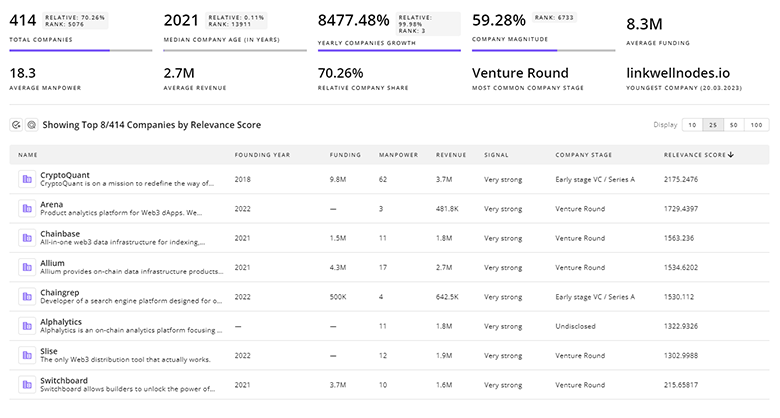
2.0K Chemical Treatments Companies
Discover Chemical Treatments Companies, their Funding, Manpower, Revenues, Stages, and much more
Chemical Treatments Investors
Gain insights into 176 Chemical Treatments investors and investment deals. TrendFeedr’s investors tool presents an overview of investment trends and activities, helping create better investment strategies and partnerships.
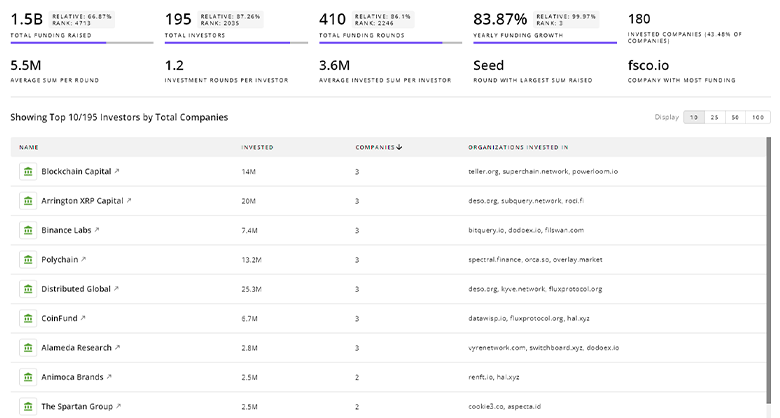
176 Chemical Treatments Investors
Discover Chemical Treatments Investors, Funding Rounds, Invested Amounts, and Funding Growth
Chemical Treatments News
Gain a competitive advantage with access to 1.0K Chemical Treatments articles with TrendFeedr's News feature. The tool offers an extensive database of articles covering recent trends and past events in Chemical Treatments. This enables innovators and market leaders to make well-informed fact-based decisions.
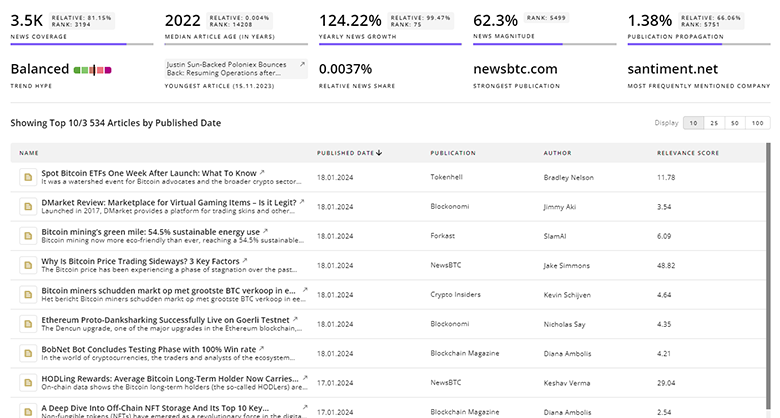
1.0K Chemical Treatments News Articles
Discover Latest Chemical Treatments Articles, News Magnitude, Publication Propagation, Yearly Growth, and Strongest Publications
Executive Summary
Chemical treatments remain central to industrial performance and environmental compliance, but the competitive frontier shifts: buyers prioritize solutions that reduce hazardous residues, lower total cost of ownership and provide measurable compliance outcomes. The most defensible business positions will combine (1) validated low-residual chemistries or non-chemical processes for difficult contaminants, (2) modular delivery formats that accelerate deployment in retrofit markets, and (3) digital controls that convert chemical supply into performance guarantees. For investors and operators, the immediate opportunity lies in technologies that convert legacy liability (PFAS, sludge disposal) into managed projects with clear unit economics and in service models that convert capital into recurring revenue through outcome-based contracts.
We seek partnerships with industry experts to deliver actionable insights into trends and tech. Interested? Let us know!
